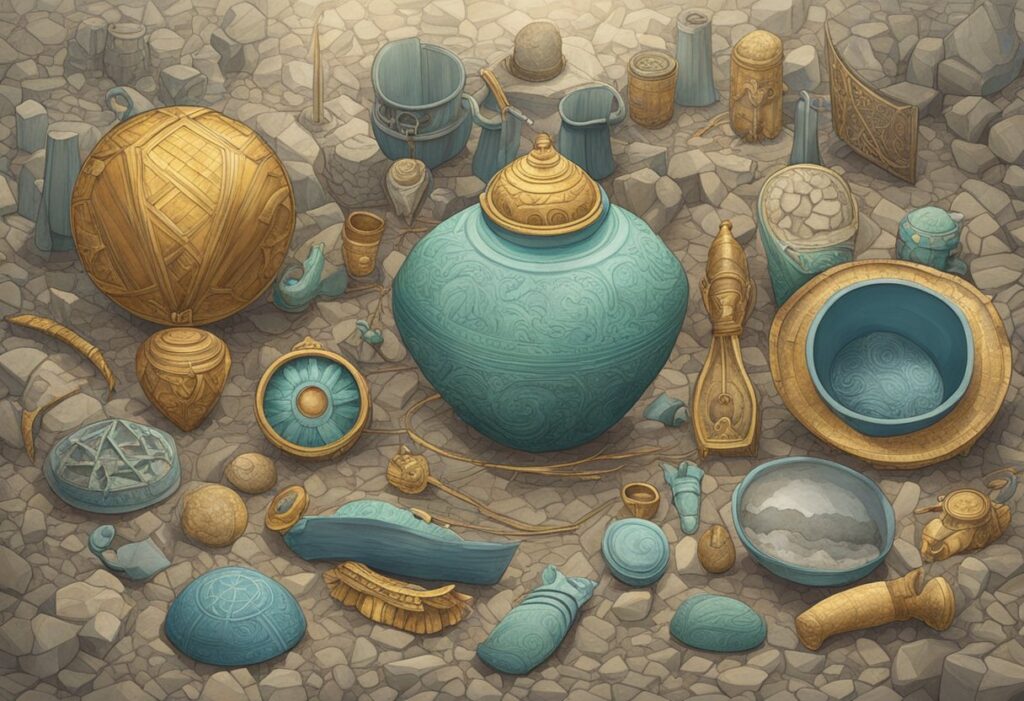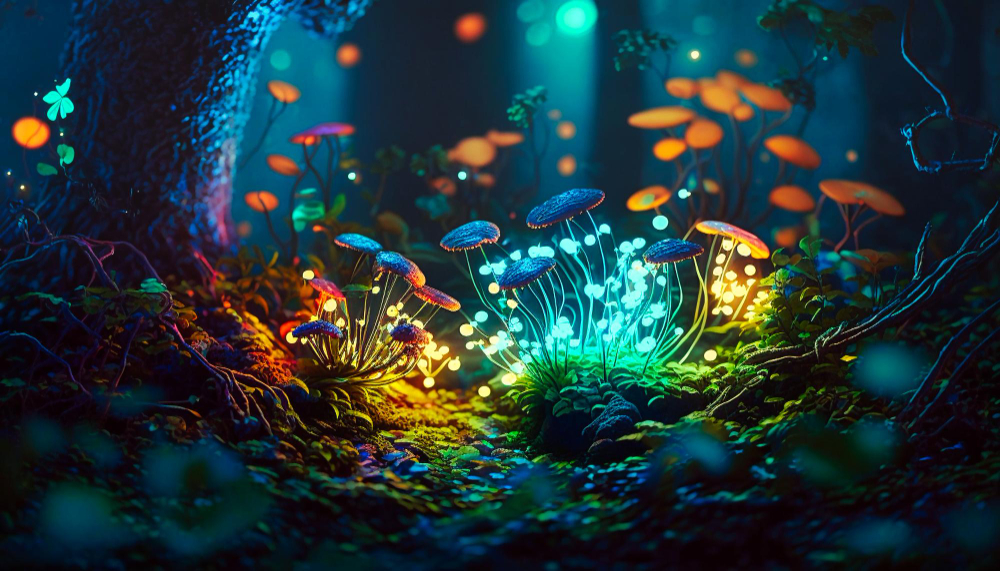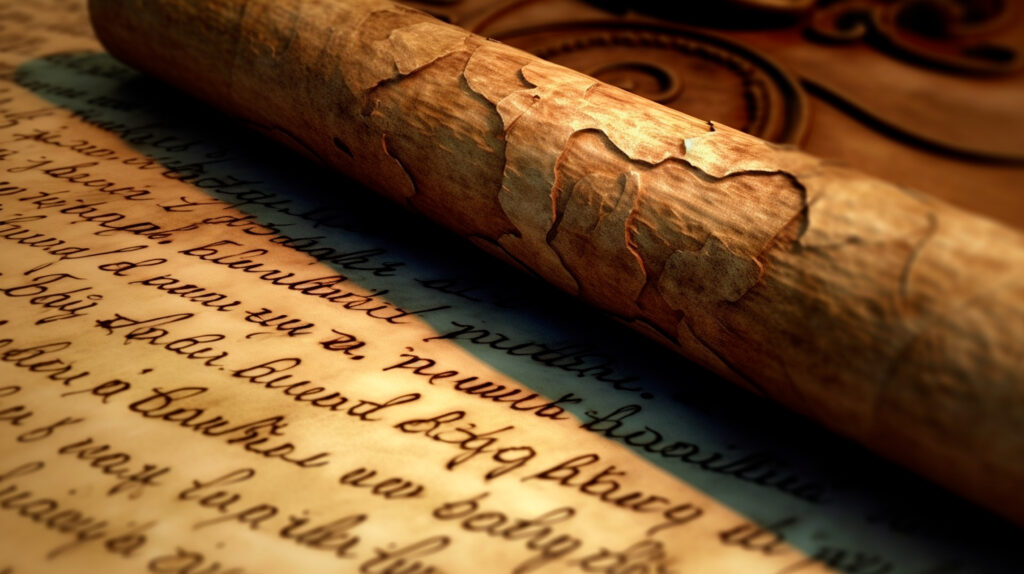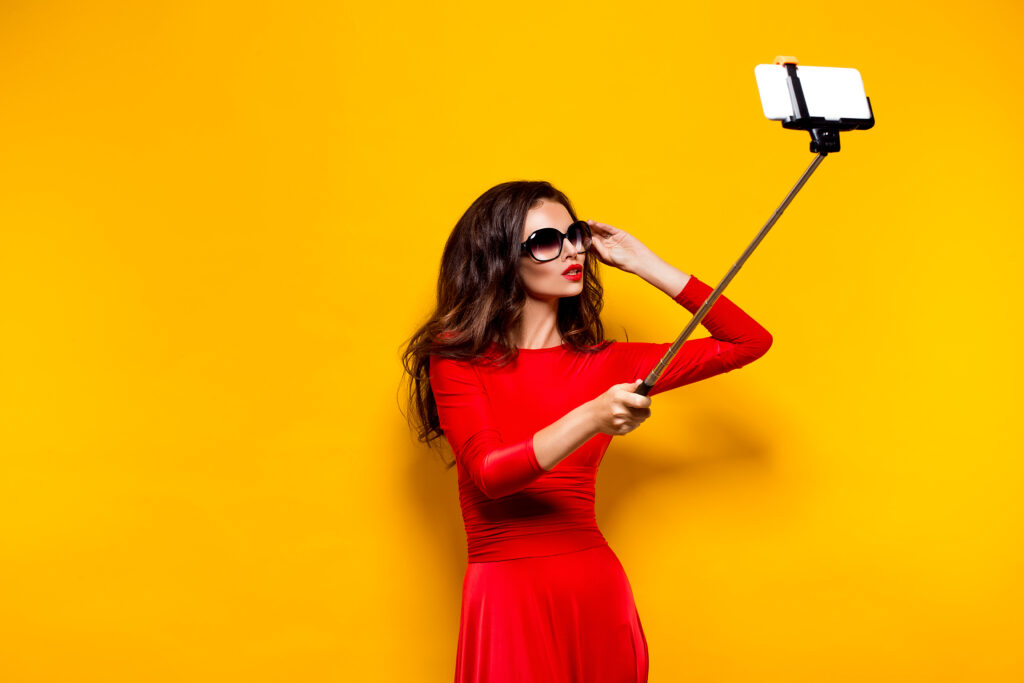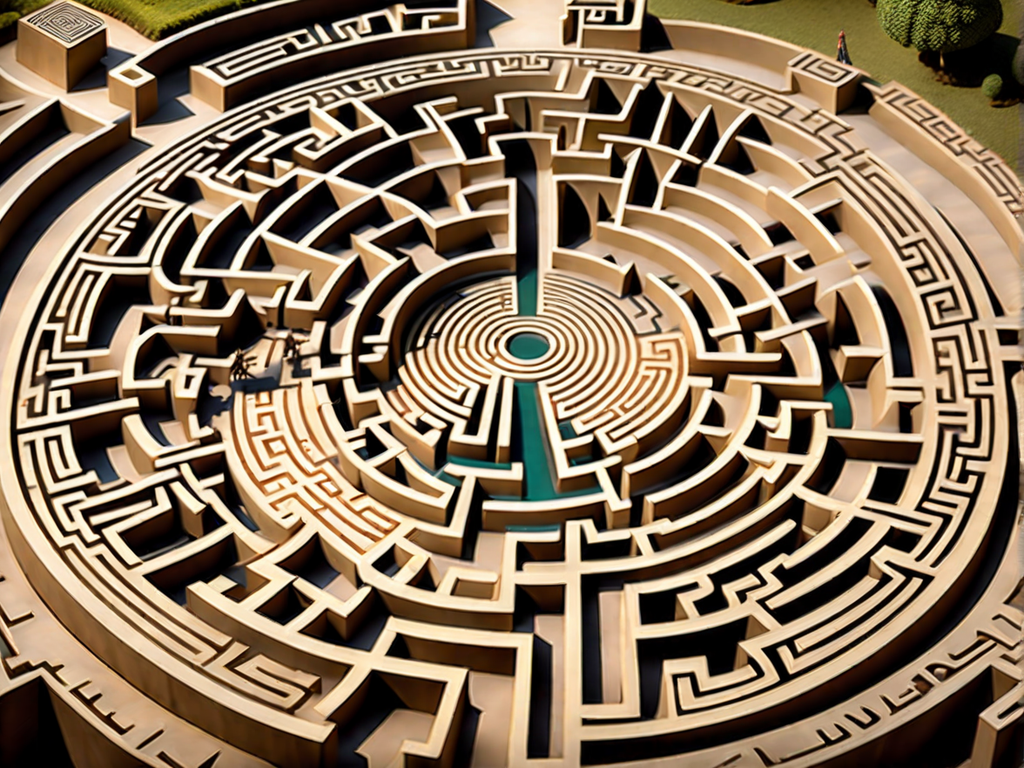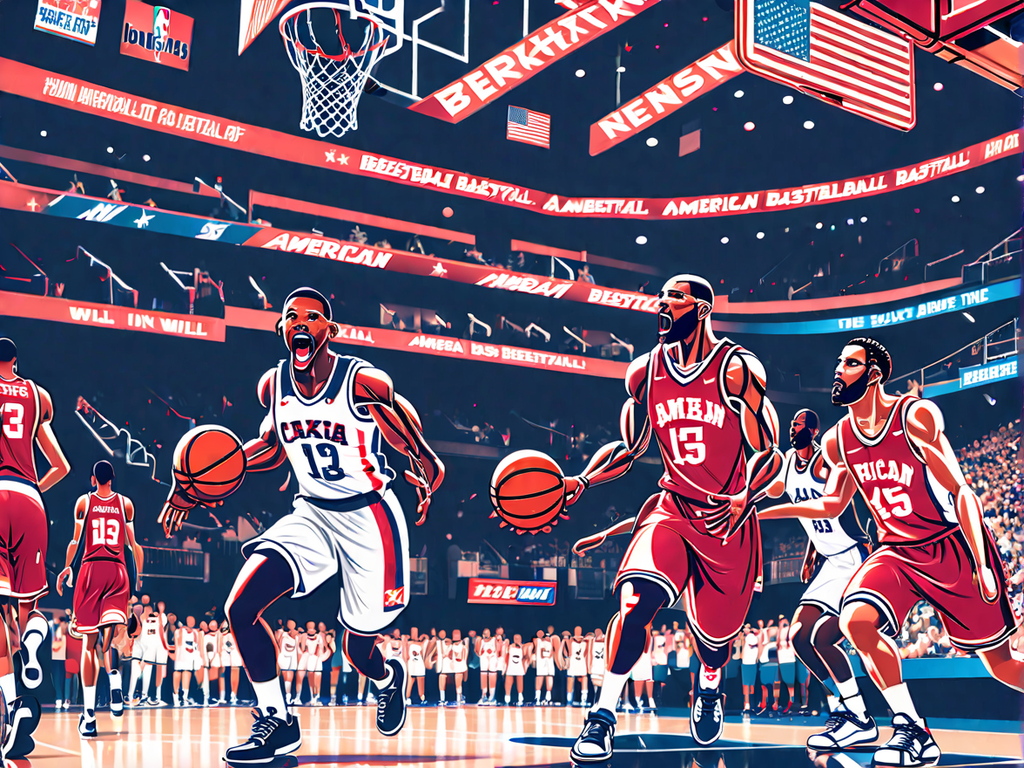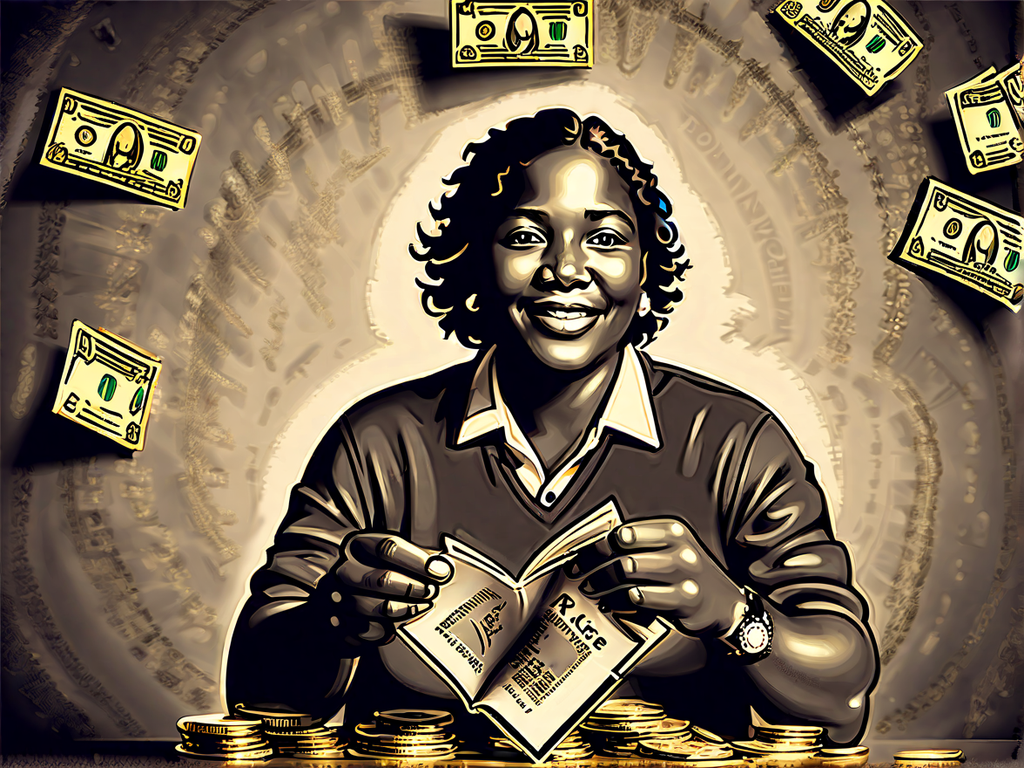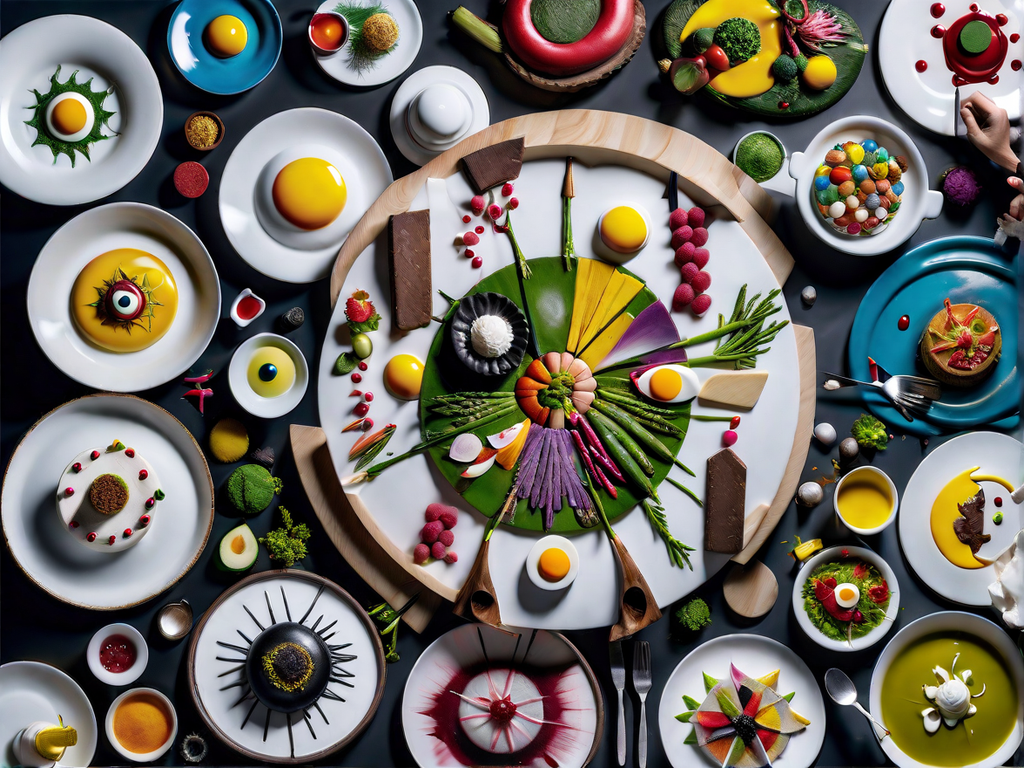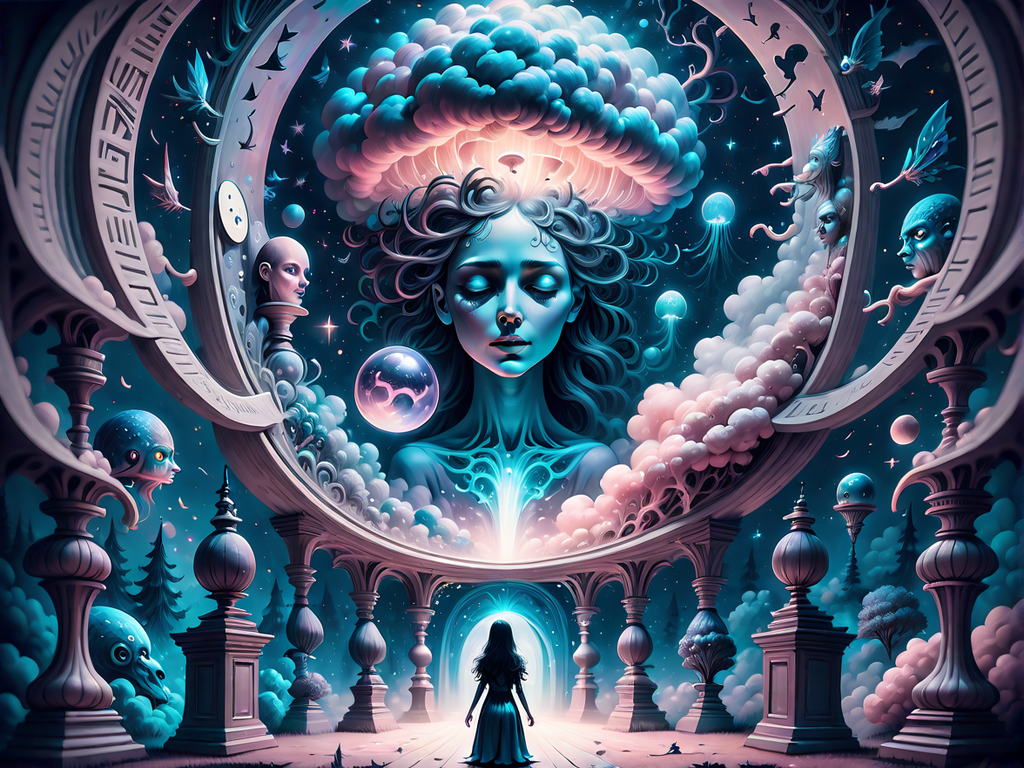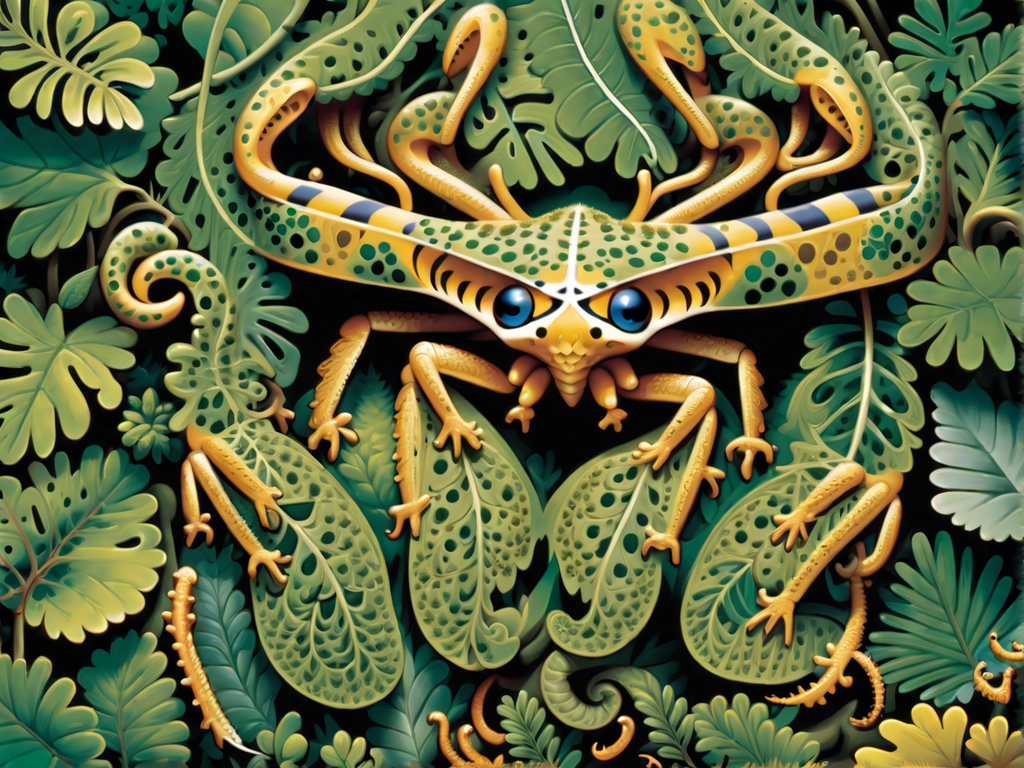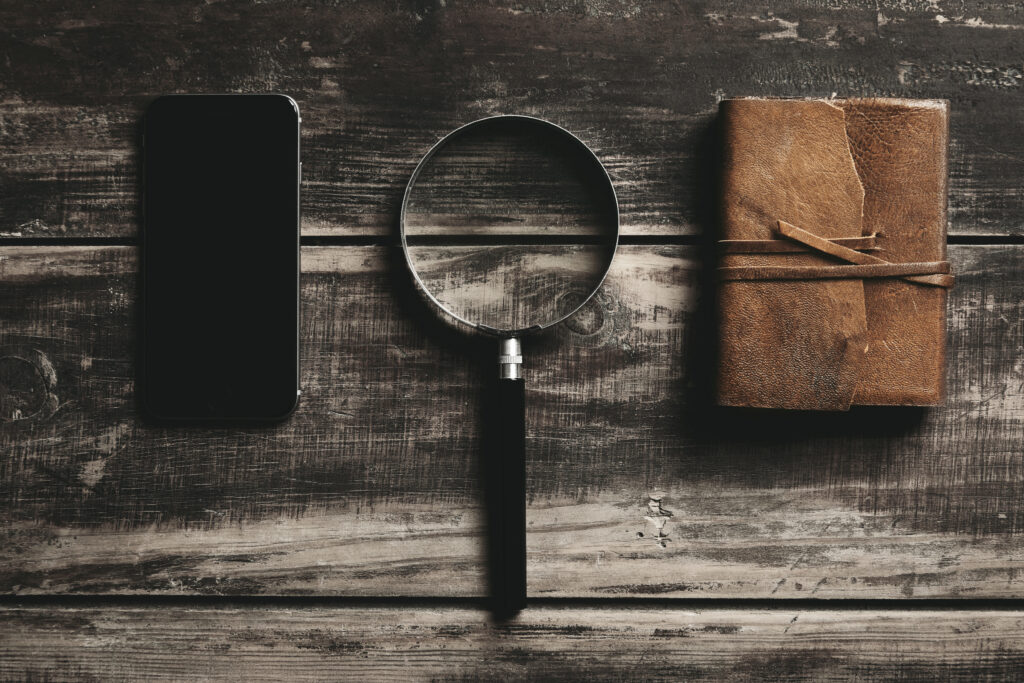In this intriguing article, we dive deep into the world of body art, specifically tattoos and piercings, and how they transcend cultural boundaries to become a powerful means of self-expression and identity.
Key Takeaways:
- Tattoos and piercings are forms of body art that go beyond mere fashion statements.
- They hold deep cultural significance, communicating messages about heritage, beliefs, and social status.
- Traditional tattoo techniques and styles vary across different cultures, showcasing unique artistic expressions.
- Modern tattoo trends and innovations constantly push the boundaries of creativity.
- The experience of getting a tattoo involves rituals, traditions, and varying levels of pain.
The History and Origins of Tattoos
Intricately etched onto human skin, tattoos have a captivating allure that transcends time and cultural boundaries. The ancient art of tattooing dates back thousands of years, with origins rooted in diverse civilizations across the globe. From the spiritual symbolism of Maori moko to the elaborate body adornment of Egyptian pharaohs, tattoos have played a significant role in human history and self-expression.
Tattoos have been an integral part of human culture for centuries. The earliest evidence of tattooing can be traced back to ancient Egypt, where mummies have been discovered adorned with intricate inked designs. These tattooed individuals were believed to be privileged members of society, representing a close connection to the divine. In other parts of the world, such as Polynesia and Japan, tattooing held deep spiritual and cultural significance, marking rites of passage, tribal affiliations, and acts of remembrance.
Tattoos have been an integral part of human culture for centuries. The earliest evidence of tattooing can be traced back to ancient Egypt, where mummies have been discovered adorned with intricate inked designs.
The art of tattooing has evolved over time, adapting to changing societal norms and personal preferences. Throughout history, tattoos have served numerous purposes, from asserting one’s social status to distinguishing oneself in battle. In the 18th and 19th centuries, tattoos became popular among sailors, who used them as markers of their travels and experiences. As time progressed, tattoos transitioned from being stigmatized to becoming a form of artistic expression, with individuals embracing inked designs as symbols of their identity and personal journey.
Despite the passage of time, the allure of tattoos remains strong in the modern era. Today, tattoo artists draw inspiration from ancient techniques and cultural motifs, integrating them into contemporary designs that speak to personal narratives and global influences. As individuals seek to honor their heritage, commemorate milestones, or simply make a bold statement, tattoos continue to serve as a powerful means of self-expression and storytelling.
Tattoos Across Cultures: A Snapshot
| Region | Tattoo Tradition |
|---|---|
| Polynesia | The ancient art of Polynesian tattooing, known as tā moko, consists of intricate patterns and symbols that convey status, genealogy, and spiritual connections. |
| Egypt | Ancient Egyptian hieroglyphics and gods were often tattooed onto the bodies of pharaohs, believed to provide protection in the afterlife. |
| Japan | Traditional Japanese tattoos, or irezumi, feature vivid colors and elaborate designs, often depicting mythical creatures and legends. |
| New Zealand | The Maori people use intricate facial tattoos called moko to showcase their ancestry, status, and spiritual beliefs. |
| Native America | Native American tribes have distinct tattoo traditions, with markings symbolizing personal achievements, tribal affiliations, and spiritual connections. |
Cultural Significance of Tattoos
In various societies around the world, tattoos hold deep cultural significance, embodying centuries-old traditions and beliefs. These cultural tattoos are not merely decorative but serve as powerful symbols that convey messages about one’s heritage, spirituality, and social status.
Symbolic tattoos are a common form of cultural expression, utilizing intricate designs and meaningful imagery to communicate deeper meanings. Each symbol holds significance, often representing stories, myths, or ancestral connections.
Ancient Symbols with Timeless Meanings
From the Maori tribal tattoos of New Zealand to the Celtic knotwork of Ireland, cultural tattoos are steeped in history and carry profound meanings. For example:
“In Maori culture, the koru symbolizes new beginnings and growth, while the intricate knots of Celtic tattoos represent eternal love and spirituality. These tattoos hold immense importance in their respective cultures, reflecting their rich traditions and values.”
The cultural significance of tattoos also extends to religious beliefs, with many cultures incorporating sacred symbols into their body art. Spiritual tattoos can be seen in Buddhist, Hindu, and Native American traditions, serving as a visual representation of one’s devotion and connection to the divine.
Tattoos Reflecting Social Status and Identity
Cultural tattoos are not solely limited to spiritual or symbolic meanings; they can also serve as markers of social status and identity within a community. In certain cultures, specific tattoos are reserved for individuals who have achieved significant milestones or have attained a particular rank.
For example, in traditional Japanese tattooing, full-body tattoos known as “irezumi” were worn by members of the yakuza, symbolizing their allegiance to the criminal underworld. These tattoos were not only visually striking but also carried a powerful message about the wearer’s association and social standing.
Furthermore, cultural tattoos can act as a form of identification, indicating one’s affiliation with a particular ethnic group or tribe. In indigenous communities, such as the Native Americans or the Maasai of East Africa, tattoos play a vital role in preserving cultural heritage and distinguishing individuals within the community.
An Exploration of Cultural Tattoo Meanings
Understanding the true significance behind cultural tattoos requires an exploration of their meanings and contexts. Here is a glimpse into the meanings behind some common cultural tattoos:
| Tattoo Symbol | Meaning |
|---|---|
| Maori Koru | Symbolizes new beginnings and personal growth |
| Celtic Knotwork | Represents eternal love and spirituality |
| Japanese Cherry Blossom | Signifies beauty, fragility, and the transient nature of life |
| Hamsa Hand | A symbol of protection, strength, and blessings |
| Maasai Tribal Patterns | Reflects community identity, bravery, and warrior status |
These are just a few examples of the intricate meanings woven into cultural tattoos. Each design holds a story, a reflection of the individual’s connection to their culture and the world around them.
As an art form that transcends borders, cultural tattoos allow individuals to preserve and showcase their heritage, convey messages of spirituality and identity, and contribute to the rich tapestry of human expression.
Traditional Tattoo Techniques and Styles
Traditional tattoos are not just a form of art; they are cultural representations that celebrate the rich heritage of various societies. These tattoos incorporate unique techniques and styles that have been passed down through generations, each carrying its own symbolic meaning.
One of the most iconic traditional tattoo styles originated in Polynesia, where hand-tapping methods are used. This ancient technique involves using a small handheld tool, typically made from bone or wood, to manually tap the ink into the skin. The result is bold, intricate designs that reflect the Polynesian culture’s deep connection to nature, spirituality, and tribal identities.
Another traditional tattoo style that holds significant cultural importance is the dotwork technique seen in Aboriginal art. With incredible precision, artists create stunning geometric patterns using tiny dots, symbolizing ancestral traditions, stories, and spiritual beliefs. These tattoos serve as a visual representation of an individual’s connection to their heritage and the land.
To better understand the diverse traditions and techniques of traditional tattoos, let’s explore the cultural tattoo techniques used in different parts of the world:
Japanese Traditional Tattoos
Japanese traditional tattoos, known as Irezumi, have a long and storied history dating back centuries. These tattoos often feature large and intricate designs inspired by traditional woodblock prints and mythological creatures. The artistry of Japanese tattoo masters is revered for its striking visuals and attention to detail.
Maori Traditional Tattoos
Maori tattoos, known as Ta Moko, are deeply embedded in Maori culture and spirituality. They are created using chisels called Uhi, which are struck with a mallet to carve deep grooves into the skin. Each Ta Moko design is unique and tells a story of the individual’s ancestry, accomplishments, and social status.
Thai Traditional Tattoos
Thai traditional tattoos, or Sak Yant, have been practiced in Thailand for centuries and are deeply rooted in Buddhist beliefs. These intricate tattoos are created using a long metal rod with a needle attached to it. The designs often incorporate sacred symbols and prayers, providing spiritual protection and good fortune to the wearer.
These are just a few examples of the traditional tattoo techniques and styles from different cultures around the world. Each style represents a distinct artistic expression and serves as a means for individuals to connect with their cultural roots, express their identity, and honor their heritage.
| Traditional Tattoo Techniques | Cultural Origins |
|---|---|
| Hand-Tapping | Polynesia |
| Dotwork | Aboriginal Art |
| Irezumi | Japan |
| Ta Moko | Maori |
| Sak Yant | Thailand |
Modern Tattoo Trends and Innovations
Step into the vibrant world of modern tattoos, where artists continually push the boundaries of creativity to deliver awe-inspiring works of art. From contemporary tattoo styles to groundbreaking innovations, the modern tattoo scene is a thriving domain where self-expression knows no bounds.
Today, modern tattoos encompass a wide range of styles, reflecting the diverse tastes and preferences of individuals seeking unique ways to adorn their bodies. From minimalist linework to elaborate watercolor masterpieces, there’s a style to suit every aesthetic.
Contemporary tattoo artists draw inspiration from a multitude of sources, merging traditional techniques with innovative design elements. This fusion of old and new creates a captivating blend that resonates with tattoo enthusiasts worldwide and leaves a lasting impression.
Pushing the Creative Boundaries
Within the realm of modern tattooing, artists are constantly pushing the envelope, experimenting with new techniques and technologies. With the advent of advanced tattoo machines, ink formulations, and sterilization methods, the possibilities for artistic expression have expanded exponentially.
One of the most notable innovations in modern tattooing is the use of 3D designs. These realistic and visually striking tattoos create an illusion of depth, making the artwork come alive on the skin. Another groundbreaking technique is UV ink, which glows under blacklight, adding an element of surprise and intrigue to the tattoo.
“Modern tattooing is an ever-evolving art form, with artists embracing new tools, styles, and approaches to deliver stunning creations that push the boundaries of what was previously thought possible.” – Tattoo artist Emma Johnson
The Intersection of Technology and Tattooing
As technology continues to intertwine with various aspects of our lives, it has also made its mark on the tattoo industry. Tattoo artists now have access to digital tools and software that aid in the design and visualization process, enabling precise detailing and intricate patterns.
Advancements in laser tattoo removal have also revolutionized the industry, offering a solution for those seeking a fresh start or desiring to fade an existing tattoo for a cover-up. This innovation provides individuals with the freedom to reimagine their body art without the limitations of past choices.
Tattooing as a Statement of Individuality
In today’s society, tattoos have become a powerful form of self-expression and a means of showcasing one’s uniqueness. Modern tattoos embrace personal narratives, creating an opportunity for individuals to tell their stories through body art.
Whether it’s a meaningful symbol, a representation of a loved one, or a tribute to a passion, tattoos have the power to encapsulate an individual’s identity in a visually stunning and permanent form. They serve as a visual testament to one’s personality, beliefs, and experiences, sparking conversations and forging connections with others who share similar values.
With each passing day, the world of modern tattoos continues to evolve, inspiring both artists and enthusiasts alike. As new styles emerge and innovative techniques redefine the art form, tattoos remain a timeless and powerful medium for self-expression in a society that values individuality and creativity.
Pain and Rituals: The Experience of Getting a Tattoo
Embarking on the journey of getting a tattoo is a deeply personal and transformative experience. It involves more than just the physical act of permanently etching ink into the skin; it encompasses rituals, traditions, and a profound connection to the rich history of body art.
For those who choose to adorn their bodies with tattoos, the experience represents a rite of passage, a symbolic transformation, and an expression of identity. The process often begins with extensive research, as individuals carefully consider the design, placement, and meaning behind their chosen tattoo.
Upon entering a tattoo studio, the atmosphere is charged with excitement and anticipation. The buzzing of the tattoo machine fills the air, mingling with the scent of ink and the collective energy of the artist and the client. It is a moment of readiness, mentally and emotionally preparing to endure the physical discomfort that accompanies the art form.
“The pain of getting a tattoo is part of the journey, an integral element that adds to the significance and value of the experience itself,” says renowned tattoo artist, Eliza Ramirez.
The actual process of getting a tattoo can vary depending on the style, size, and intricacy of the design. The tattoo artist skillfully maneuvers the machine, creating a symphony of punctures and ink deposits that gradually bring the artwork to life on the canvas of the skin.
While the pain experienced during a tattoo can be intense, it is often described as a cathartic and transformative sensation. It is a physical reminder that the journey of self-expression and personal growth requires endurance and a willingness to push through discomfort.
Tattoo rituals and traditions further enhance the experience, underscoring the sacredness and cultural significance of the art form. In some indigenous cultures, tattooing is considered a spiritual process, with ceremonies and rituals that honor the connection between the individual, their ancestors, and the wider community.
The Role of Tattoo Rituals and Traditions
Tattoo rituals and traditions provide a framework for the tattoo experience, weaving together elements of spirituality, symbolism, and cultural heritage. They act as guiding principles that shape the journey and create a sense of unity and belonging.
One such example is the ancient tradition of Sak Yant tattoos in Thailand. These intricate designs, typically performed by Buddhist monks, are believed to offer spiritual protection and blessings. The ritual involves chanting, meditation, and the use of a traditional hand-carved bamboo rod to administer the tattoo.
Similarly, in the Maori culture of New Zealand, the art of tattooing, known as Ta Moko, holds deep spiritual significance. Each tattoo design tells a unique story, representing a person’s ancestry, achievements, and social status. The tattooing process is considered a sacred ceremony, with elaborate rituals and blessings that accompany the journey.
These rituals and traditions infuse the tattoo experience with a sense of reverence and depth, elevating it beyond a mere physical act. They become an integral part of the individual’s identity, intertwining the personal story with broader cultural narratives.
The Emotional and Psychological Impact
Getting a tattoo is not merely a physical endeavor; it taps into the emotional and psychological realms as well. The act of permanently marking one’s body carries a weight of permanence, serving as a constant reminder of personal growth, milestones, and lessons learned.
The pain experienced during the tattooing process can also elicit a range of emotions, from anticipation and excitement to vulnerability and catharsis. It becomes an intimate journey of self-discovery and self-expression, providing individuals with a tangible symbol of their innermost beliefs, passions, and aspirations.
Furthermore, the connection formed between the tattoo artist and the client can play a significant role in the emotional impact of the experience. Trust, communication, and collaboration are paramount, as the artist’s role extends beyond the technical execution of the tattoo. They become an essential guide, helping to shape the client’s vision and translate it into an enduring work of art.
A Reflective Table of various Tattoo Rituals
| Tattoo Ritual | Culture | Meaning |
|---|---|---|
| Sak Yant | Thailand | Spiritual protection and blessings |
| Ta Moko | Maori (New Zealand) | Representation of ancestry, achievements, and social status |
| Tebori | Japan | Traditional hand-carved tattooing technique |
| Haida Tattoos | Haida (Canada) | Symbols of cultural identity and lineage |
As the sound of the tattoo machine fades and the freshly inked artwork takes shape, the pain begins to recede, giving way to a profound sense of accomplishment and empowerment. The experience of getting a tattoo is not just about the physical outcome; it is a transformative journey of self-discovery, cultural connection, and artistic expression.
Cultural Taboos and Misconceptions Around Tattoos
Tattoos have long been associated with cultural taboos and misconceptions, deeply ingrained in societies around the world. These perceptions have evolved over time, challenging societal norms and embracing individual freedom of expression.
One common misconception is that tattoos are associated with criminality or deviant behavior. This belief stems from a time when tattoos were often seen on individuals involved in illegal activities or marginalized communities. However, in contemporary society, tattoos are widely accepted as a form of self-expression and artistry, with people from all walks of life embracing them.
Another taboo associated with tattoos is their perceived impact on employment prospects. Many individuals still believe that visible tattoos can hinder career opportunities, leading to discrimination in the workplace. However, as societal attitudes continue to evolve, many companies are becoming more inclusive and accepting of tattoos, recognizing them as personal expressions of identity.
“Tattoos are not a reflection of a person’s character or abilities. They are a form of self-expression and should not be a barrier to employment or success.”
Religious and cultural taboos also play a significant role in shaping perceptions of tattoos. In certain cultures, tattoos are associated with spiritual or religious beliefs and may carry sacred symbolism. For example, in Japan, tattoos known as irezumi are traditionally associated with criminal organizations, leading to their stigmatization. However, there is a growing movement challenging these taboos, as individuals aim to reclaim their cultural heritage and proudly display their tattoos.
To better understand the cultural taboos and misconceptions surrounding tattoos, let’s take a closer look at some examples from different parts of the world:
1. Japan
In Japan, tattoos have historically been associated with criminality and are often perceived as disruptive to social harmony. The government even banned tattooing for many years. However, attitudes are slowly changing, and there is a growing appreciation for tattoos as art forms.
2. Maori Culture
In Maori culture, tattoos known as moko carry deep cultural and spiritual significance. They are a way to connect with one’s ancestors and communicate one’s identity. However, the appropriation of these tattoos by non-Maori individuals has led to cultural debates and tensions.
3. Middle East
In some Middle Eastern countries, tattoos are considered haram (forbidden) due to their association with permanent body modification. This perception is rooted in religious beliefs and cultural traditions that prioritize modesty and purity.
| Cultural Taboo/Misconception | Cultural Context |
|---|---|
| Association with criminality | Global |
| Impact on employment prospects | Global |
| Stigmatization in religious and cultural contexts | Global |
| Erosion of cultural heritage | Specific to certain cultures |
It is essential to recognize and challenge these cultural taboos and misconceptions to foster a more inclusive and accepting society. Tattoos should be celebrated as a unique form of self-expression and as a testament to the diverse cultural heritage that exists around the world.
The Rise of Body Piercing: From Tradition to Fashion Statement
In the world of body art, body piercing has emerged as a powerful form of self-expression, transcending its ancient roots to become a prominent fashion trend. From the early tribal practices to the modern piercing culture, the art of body piercing has evolved, reflecting changing societal norms and personal style choices.
Body piercing, once deeply rooted in cultural traditions, has now become a fashion statement that allows individuals to showcase their unique personality and sense of style. Whether it’s a simple earlobe piercing or an elaborate arrangement of piercings adorning various body parts, the possibilities and trends are endless.
Just like tattoos, body piercing has forged its own path in the realm of fashion, attracting enthusiasts who seek to push the boundaries of traditional norms and embrace alternative forms of self-expression. With the rise of body piercing as a fashion trend, the demand for stylish jewelry specifically designed for piercings has skyrocketed, giving rise to a thriving industry that caters to this growing market.
Let’s take a closer look at some of the popular body piercing trends:
1. Multiple Ear Piercings
The ear has become a canvas for self-expression through different types of ear piercings. From tragus and helix piercings to snug and conch piercings, the possibilities are vast. People now experiment with various combinations to create unique looks, layering different earrings and studs to make a fashion statement.
2. Septum Piercings
Septum piercings, once associated with specific cultures, have now become a mainstream trend. This piercing involves the cartilage between the nostrils, showcasing boldness and individuality. It has gained popularity among fashion-forward individuals seeking to add an edgy touch to their style.
3. Navel Piercings
While it gained popularity in the 1990s, the navel piercing trend continues to thrive. This piercing, known for its sensuality and allure, allows individuals to adorn their midriffs with beautiful jewelry, making it a statement piece for beachwear and crop tops.
4. Facial Piercings
Facial piercings, such as lip, eyebrow, and nose piercings, have become iconic symbols of bold self-expression. These piercings add an element of attitude and uniqueness to one’s appearance, enhancing facial features and making a lasting impression.
5. Dermal Piercings
Dermal piercings, also known as microdermals, involve inserting jewelry beneath the skin’s surface. They offer a minimalist yet striking look, providing individuals with the freedom to experiment with placement and style.
As body piercing continues to evolve, new trends and innovations emerge, allowing individuals to create their own unique style statements. The combination of different piercings, jewelry designs, and placement options offers endless possibilities for self-expression through body piercing.
| Piercing Trend | Description |
|---|---|
| Multiple Ear Piercings | Layering different earrings and studs in various parts of the ear to create unique looks. |
| Septum Piercings | Piercing the cartilage between the nostrils to add an edgy touch to one’s style. |
| Navel Piercings | Adorning the midriff with jewelry, making a statement piece for beachwear and crop tops. |
| Facial Piercings | Adding lip, eyebrow, and nose piercings as iconic symbols of bold self-expression. |
| Dermal Piercings | Inserting jewelry beneath the skin’s surface for a minimalist yet striking look. |
The Art of Body Modification: Beyond Tattoos and Piercings
As the world of body art continues to evolve, individuals are exploring unique ways to express themselves through extreme body modifications. These forms of body art go beyond the traditional realms of tattoos and piercings, pushing boundaries and embracing individuality in captivating ways.
One of the most striking forms of body modification is scarification, where intricate patterns are created on the skin by intentionally inflicting scars. This ancient practice has been used in diverse cultures for various purposes, such as rites of passage or tribal identification. Scarification allows individuals to bear visible marks that carry deep personal meanings, transforming their bodies into living works of art.
Another awe-inspiring body modification technique is branding, where heated objects are used to create permanent marks on the skin. This process involves the intentional application of heat or cold to create impactful designs, transforming the skin into a canvas of self-expression. Individuals who choose branding as a form of body modification see it as an opportunity to showcase their uniqueness and commitment to their own personal journeys.
Tongue splitting is yet another fascinating form of body modification, where the tongue is surgically divided into two separate entities. This unconventional practice offers individuals a distinct way to challenge societal norms and redefine their boundaries of self-expression. With its roots in tribal rituals and spiritual practices, tongue splitting has evolved into a form of extreme body art that celebrates individuality and uniqueness.
“Body modification allows me to express who I am on a deeper level. It’s not about conforming to societal standards, but rather about embracing my true self and pushing the boundaries of what is considered ‘normal’.”
Exploring the Diverse World of Body Modification
| Form of Modification | Description |
|---|---|
| Scarification | Ancient practice of intentionally inflicting scars to create intricate patterns on the skin, serving as a form of self-expression and cultural identity. |
| Branding | The intentional application of heat or cold to create permanent marks on the skin, allowing individuals to showcase their unique identity through distinct designs. |
| Tongue Splitting | The surgical division of the tongue into separate entities, serving as a rebellious form of self-expression and an avenue for personal transformation. |
Extreme body art, such as scarification, branding, and tongue splitting, illustrates the boundless creativity and courage individuals possess in expressing their true selves. These unique body modifications serve as symbols of personal transformation, defiance of societal norms, and the celebration of individuality in a world where conformity often prevails. By exploring the endless possibilities of body modification, individuals reclaim their bodies as canvases and showcase the extraordinary ways they choose to define themselves.
Tattoos as a Universal Language of Identity
In a world where cultures and perspectives are diverse, tattoos have emerged as a powerful universal language of identity. These inked artworks on our skin transcend language barriers, allowing individuals to express their unique selves and communicate their stories, beliefs, and passions to the world.
Tattoos have become a global phenomenon, deeply rooted in the rich tapestry of our shared human experience. From the ancient Polynesians who adorned their bodies with intricate symbols representing their heritage, to the contemporary tattoo artists who blend traditional techniques with innovative styles, the global tattoo culture showcases the beauty and diversity of self-expression.
For many, tattoos are more than just art. They are personal narratives etched into the skin, scripts of resilience, love, loss, and self-discovery. Each tattoo has a story to tell, a visual representation of an individual’s journey. It is a visual memoir bound by the threads of their experiences, emotions, and aspirations.
Furthermore, tattoos serve as bridges between different cultures, fostering connections and breaking down barriers. In a world that can sometimes be fragmented, tattoos provide a sense of unity, reminding us of our shared humanity. Regardless of where we come from or what languages we speak, the language of tattoos speaks volumes about our shared desire for self-expression and personal identity.



